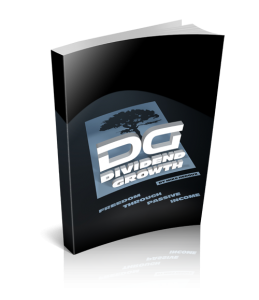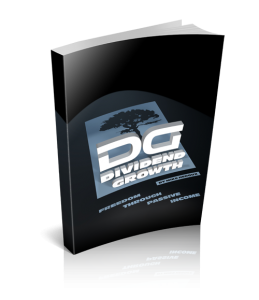As you probably know already, I’ve recently launched 2 dividend investing book (a Canadian Edition [1] and US Edition [2]). This is a quick excerpt from the book…
US Edition [2] |
Canadian Edition [1] |
|
 [3] [3]
|
 [4] [4] |
Is there anything more fun in finance than looking at your next stock pick? This is a moment of fun and excitement as you are about to put your money at work!
The first thing you will need when you look at your next purchase is numbers. I personally think it’s the easiest way to build your portfolio: you start with filtering the right stocks through a bunch of numbers. Unfortunately, it’s not that easy for Canadians as most free stock filters won’t give you all the information you need. So instead of blindly stating key ratios, I’ll show you how to do your search with free Canadian stock screeners. But before we get into that, first you need to know what you’re looking for, right?
Dividend Yield > 3%
Since you want to build a dividend stock portfolio, the very first thing you should be looking to is the dividend yield. Personally, I don’t like dividend stocks with a yield under 3%…. unless I know that a company is about to undertake a very aggressive dividend increase policy. I will, however, usually consider lower dividend yield stocks from US companies as they will count as the “secure” section of my portfolio. For example, I hold Coca-Cola (KO) with a dividend yield at 2.78%. However, since KO is diversified and sitting on tons of cash, I consider this stock more like a bond than a stock. On top of that, KO shows the historical habit of doubling its dividend payouts every 6.5 years. But let’s return to the concept of 3%+ dividend yield Canadian stocks!
There are over 100 stocks paying a more than 3% dividend yield in Canada, so don’t you think that’s enough for you to start your search? This is why I usually ignore lower yield stocks for my Canadian assets. On top of that, receiving a 2% dividend is like getting paid a few loonies for shovelling snow out of your driveway; it just doesn’t cut it!
5 Year Dividend Growth > 1%
Some people may argue that I’m being generous by allowing some companies with a 1% dividend growth over the past 5 years into my searches. Well, the thing is that we all went through 2008 and several companies had to suspend their dividend increases for at least 2 years. Even Canadian banks put their dividends on hold–even while they were cashing astronomic profits. That’s why I’m giving some of these stocks a break by looking only for companies that were able to increase their dividend over the past 5 years. For the record, when I played with the TMX stock screener, I went from 22 to 13 stocks just by changing the 5 years dividend growth from > 1% to > 5%. In my opinion, 13 stocks is definitely not enough to build a solid portfolio.
Return on Equity (ROE) > 10%
Another important consideration is the ROE. In fact, the ROE is very important. It relates to the ability of a company to generate profits from the investors’ money.
Return on Equity = Net Income/Shareholder’s Equity
I’m looking for companies able to generate over 10% on shareholder’s equity. This shows that the company is able to successfully manage the money invested and that it has a solid plan for growth.
5 Year Annual Income Growth Rate > 1%
Then again, we are looking for growth. That’s why I want a company that is able to grow its income over time. Since 2008 is getting in our way, I’m looking for companies that were able to grow by at least 1% their annual income over the past 5 years. If you want your stock to increase its dividend over time, you want to pick companies with income growth.
Current Price / Earnings Ratio < 20
Historically, the S&P TSX (Canadian Index) has been traded around 15 to 16 P/E ratio. Therefore, If you are able to pick lower P/E ratio stocks than the average, chances are that they are undervalued and that both their stock and dividend will soar in the coming years.
There is one more thing to consider when you look at the P/E ratio: you need to compare it to the company’s industry. For example, Canadian Banks P/E ratio sector has always been under 15, so it’s not a big surprise to find the big 6 in this category if you run only this filter in your stock screener. On the one hand, Canadian Banks are definitely good investments, but at the same time, don’t buy them in the hope of seeing their stocks going back up to a P/E ratio of 15.
Dividend Payout Ratio < 75%
If you are looking for dividend growth stocks, the dividend payout ratio must be one of the very first things you look at. Why is listed as the last ratio of this section? Simply because you won’t be able to find it through a free stock screener! I know, life sucks sometimes! Therefore, you will have to calculate it on your own.
This ratio is very important as it tells you how the company will pay its dividend. If the ratio is close to 100%, that means the company will have to eventually consider financing its dividend (through debts, more equity or selling assets)–which is pretty bad in all cases. The other catastrophic scenario would be a dividend cut. That’s why you want to stay away (as much as possible) from a high dividend payout ratio. If the company is at a growth stage, you can extend yourself up to 75%-80%… however, the best case scenario would be to pick stocks under 60%.
The Dividend payout ratio is not that complicated to calculate if you follow this simple formula:
Dividend Payout Ratio = Dividends per Share / Earnings per Share
How You Can Apply Those Ratios With Real Stock Picks
In my latest book; Dividend Growth: Freedom through Passive Income [6], I explain how to use ratios and free stock screener to start your journey into dividend investing. You will also learn how to invest in both Canadian and US stocks without being penalized by currency changes and withholding taxes. Check out my book now and let me know what you think! [6]
US Edition [2] |
Canadian Edition [1] |
|
 [2]Click here to Download [2]Click here to Download |
 [1] [1] |
Cheers,
Mike.
image credit [7]
Google+ [8]